Currently, promoting the development of effective and sustainable agriculture in the direction of ecology, circular agriculture, following nature, synchronously applying advanced science and technology to improve quality and added value is the direction that the provincial agricultural sector is actively implementing. For this process to take place in the right direction and effectively, it is necessary to pay attention to investing properly in the irrigation system. Because irrigation is the root for restructuring agriculture. If agriculture is considered the "support" of the economy, irrigation must be considered the "support" of the "support", especially when climate change is becoming increasingly extreme and unpredictable.
The Hieu River saltwater intrusion dam project is proving effective - Photo: D.T
Many lakes and dams are not safe and stable.
Quang Tri Irrigation Works Management and Exploitation Company Limited was assigned by the Provincial People's Committee to manage and operate key irrigation works in the province. These works include 2 dams (Nam Thach Han and Sa Lung) with a total designed flow of over 33 m3/s, 17 reservoirs with a capacity of over 185 million m3 of water, 29 electric pumping stations, 10 salinity prevention dams, 1 flood diversion project and over 677 km of canals (including main canals, level 1 and 2 canals).
The system of irrigation works managed by the company is responsible for supplying irrigation water for agricultural production in 8/10 districts, towns and cities of the province, with a total area of over 32,000 ha/year, accounting for over 64% of the total agricultural production area of the province; preventing salinity and keeping fresh water for 14,300 ha/year. In addition, it is responsible for supplying water for industry, aquaculture and serving other people's lives and economies .
According to the leader of Quang Tri Irrigation Works Management and Exploitation Company Limited, in recent years, with the attention of the State, many large lake and dam projects such as Nam Thach Han dam, Hieu river saltwater prevention dam, Da Mai, Tan Kim, Ha Thuong, Truc Kinh, Kinh Mon, La Nga, Trieu Thuong 1, Trieu Thuong 2 reservoirs have been invested in upgrading; canals from main canals to level 1 canals have mostly been solidified.
Thanks to that, the irrigation systems managed and exploited by the company are increasingly effective in irrigation, serving agricultural production, contributing to increasing food output, ensuring stability and socio-economic development, while ensuring the safety of works in natural disaster prevention (PCTT).
However, there are still some medium and small dams that have not been invested in for repair, upgrading, and dam safety. In particular, there are lakes such as Phu Dung and Nghia Hy that were invested in and built before the 1990s, and the projects were designed according to old design standards, which do not ensure flood prevention in the current extreme rainy and flood weather conditions.
On the other hand, because most of the irrigation works are located outdoors, the canal system stretches over a large area from the mountains to the plains, passing through many areas with complex terrain, topography and geology, so it is often greatly affected by nature, especially after storms and floods, so many works have been damaged and degraded. Almost every year, there are works damaged and degraded due to the impact of rain and floods.
Every year, the cost of overcoming the consequences of storms and floods as well as the regular maintenance and repair costs have not met the actual needs, so many construction items are damaged and degraded. Some contents of dam and reservoir safety management according to Decree 114/2018/ND-CP dated September 4, 2018 of the Government such as: dam safety inspection; installation of specialized hydrometeorological equipment; development of response plans in emergency situations; installation of monitoring, operation systems, and safety warning information equipment for dams and downstream areas have not been allocated funds to ensure implementation according to plan. Therefore, there is still a potential risk of losing the safety of construction works during the flood season.
During the 2023 flood season, there are 7 reservoirs with flood control gates that must operate to regulate flood discharge, including Ai Tu, Khe May, Nghia Hy, Da Mai, Tan Kim, Truc Kinh, and Ha Thuong reservoirs. There are a number of canals and structures located in low-lying areas, under the impact of flood flows, causing landslides and silting of the canal bed.
The total length of the damaged canal is more than 2,000 m, including 450 m of landslides on the canal roof, 1,580 m of silting on the canal bed, and 76 m of collapsed canal walls. Some items of the Vinh Phuoc and Chau Thi saltwater prevention project were damaged...
Upgrading and modernizing irrigation systems is an urgent requirement.
A survey of irrigation works in the area shows that in recent years, many objective and subjective factors have had a major impact on irrigation infrastructure. The factor that has the most direct impact and the most serious consequences on irrigation infrastructure is the impact of climate change, storms and floods that occur every year with strong and continuous intensity.
In addition, many irrigation works built long ago have degraded, the previous design mainly focused on small-scale agricultural production, serving rice, so it is difficult to change the function to meet large-scale production, serving multiple purposes. The efficiency of water use for agriculture is not high, there is still loss due to the canal system not being guaranteed.
Along with that, unreasonable production arrangement and management, increased water exploitation activities, sand and gravel mining activities on rivers are the main causes of bank erosion, lowering of river beds, leading to lowering of river water levels, causing water resource depletion, degradation of water environment...
Currently, Quang Tri province determines to develop agriculture and rural areas in a sustainable manner, increase added value, efficiency and competitiveness, and move towards building a smart, modern agriculture that adapts to climate change. Stabilize grain output from 250,000 to 260,000 tons/year. By 2025, ensure proactive irrigation for over 90% of the 2-crop rice growing area, and by 2030, reach 100% of the area.
To serve the above development tasks, the province needs to focus on integrating all resources, mobilizing socialized resources to continue investing in synchronous development of agricultural infrastructure, meeting the requirements of large-scale, concentrated commodity production.
In particular, attention is paid to upgrading and modernizing the irrigation system to maximize design capacity; ensuring proactive irrigation of over 90% of the area of two-crop rice, color areas and industrial crops from 5,500 - 6,000 ha, providing water for aquaculture of 2,500 ha; preventing salinity and keeping fresh water for 15,500 ha; enhancing flood drainage capacity for residential areas; proactively draining water for 21,500 ha of agricultural land in the coming years.
Along with that, the province needs to deploy solutions to ensure water security, strengthen management, operation, and maintain the safety of the dam and reservoir system. Proactively prevent, combat, and minimize adverse impacts caused by natural disasters related to irrigation infrastructure; research, develop, apply science and technology, and digital transformation in ensuring water security, dam and reservoir safety. Strengthen environmental protection, protect water resources, prevent and combat pollution, degradation, and depletion of water resources... to promote sustainable development of the province's agricultural production.
Dan Tam
Source: https://baoquangtri.vn/nang-cap-he-thong-thuy-loi-de-thuc-day-phat-trien-nong-nghiep-ben-vung-190030.htm


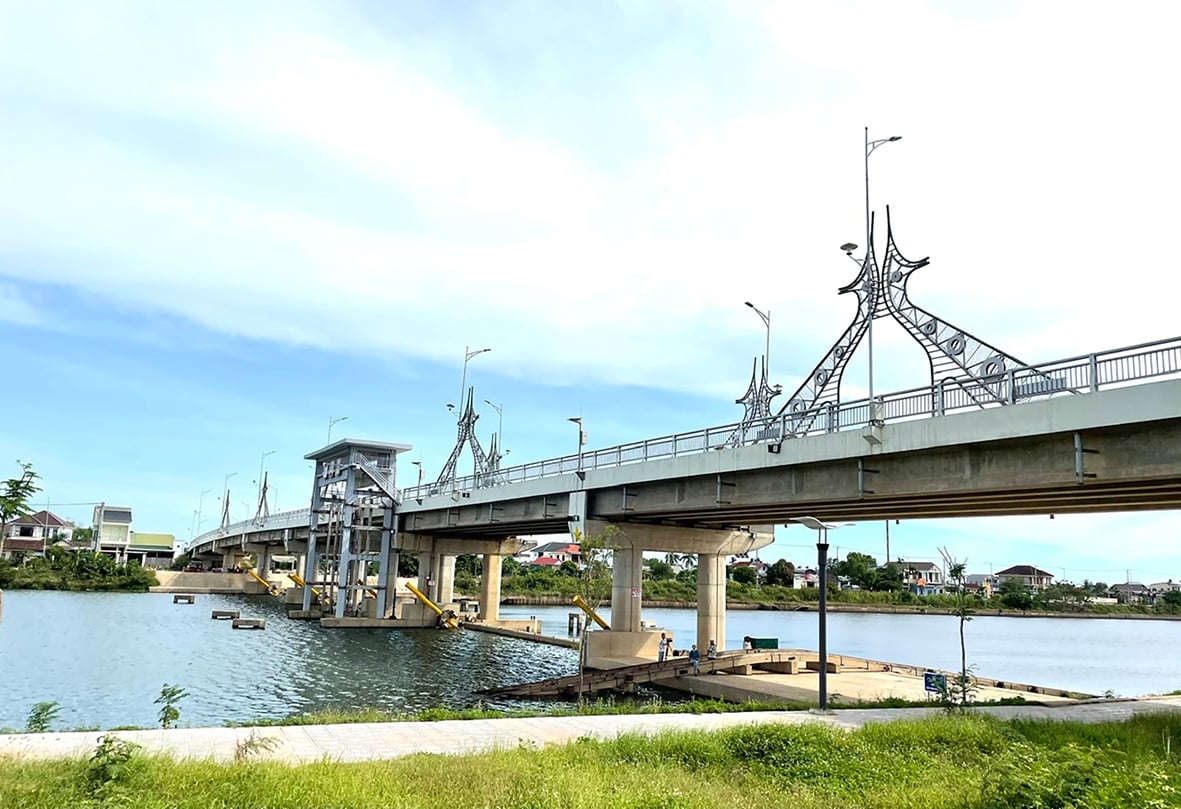
![[Photo] Readers line up to visit the photo exhibition and receive a special publication commemorating the 135th birthday of President Ho Chi Minh at Nhan Dan Newspaper](https://vphoto.vietnam.vn/thumb/1200x675/vietnam/resource/IMAGE/2025/5/17/85b3197fc6bd43e6a9ee4db15101005b)
![[Photo] More than 17,000 candidates participate in the 2025 SPT Competency Assessment Test of Hanoi National University of Education](https://vphoto.vietnam.vn/thumb/1200x675/vietnam/resource/IMAGE/2025/5/17/e538d9a1636c407cbb211b314e6303fd)


![[Photo] Prime Minister Pham Minh Chinh chairs meeting on science and technology development](https://vphoto.vietnam.vn/thumb/1200x675/vietnam/resource/IMAGE/2025/5/17/ae80dd74c384439789b12013c738a045)







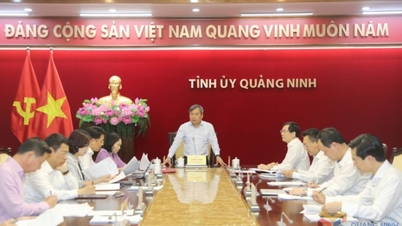



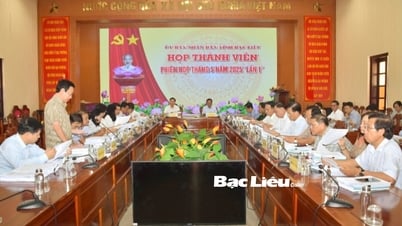


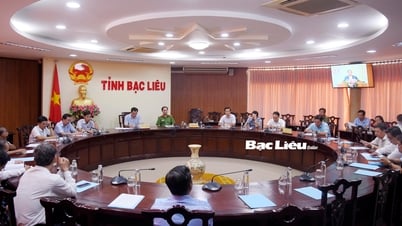
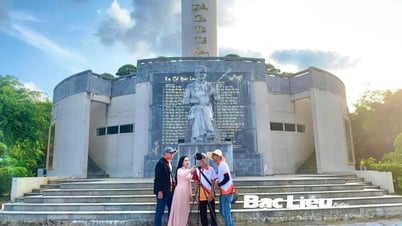
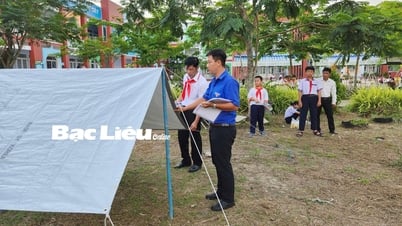










![[Photo] Nearly 3,000 students moved by stories about soldiers](https://vphoto.vietnam.vn/thumb/1200x675/vietnam/resource/IMAGE/2025/5/17/21da57c8241e42438b423eaa37215e0e)


























































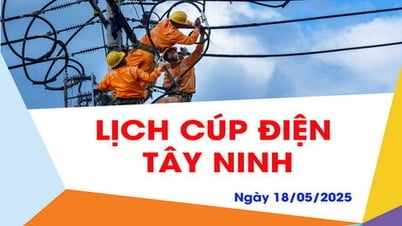










Comment (0)